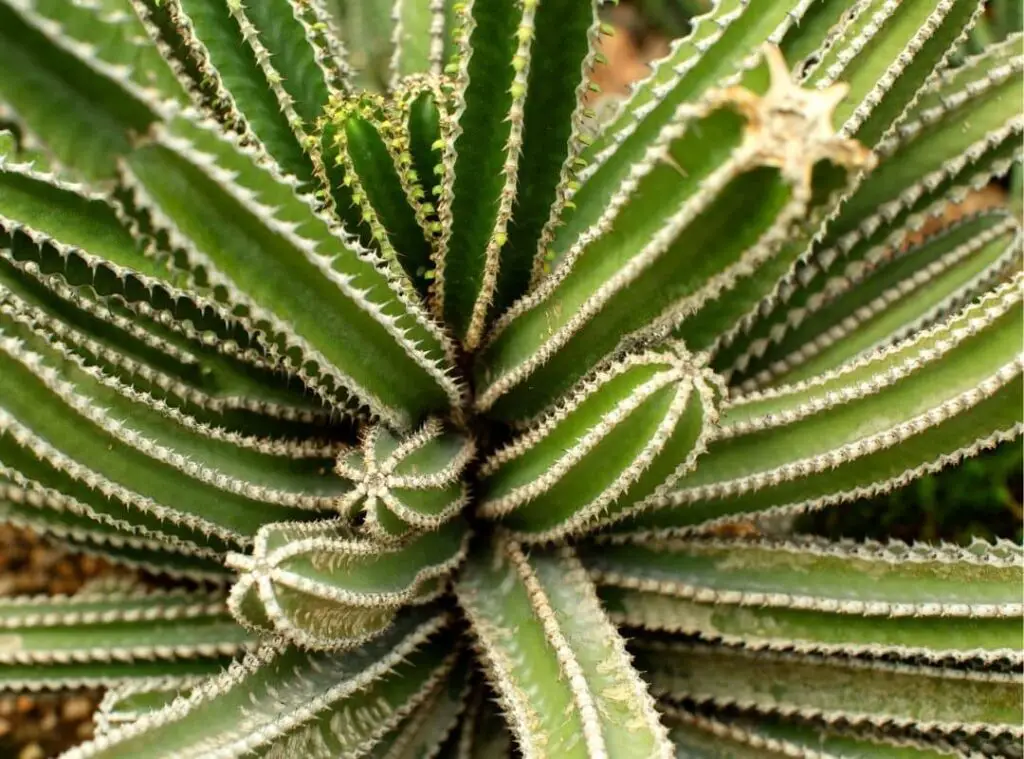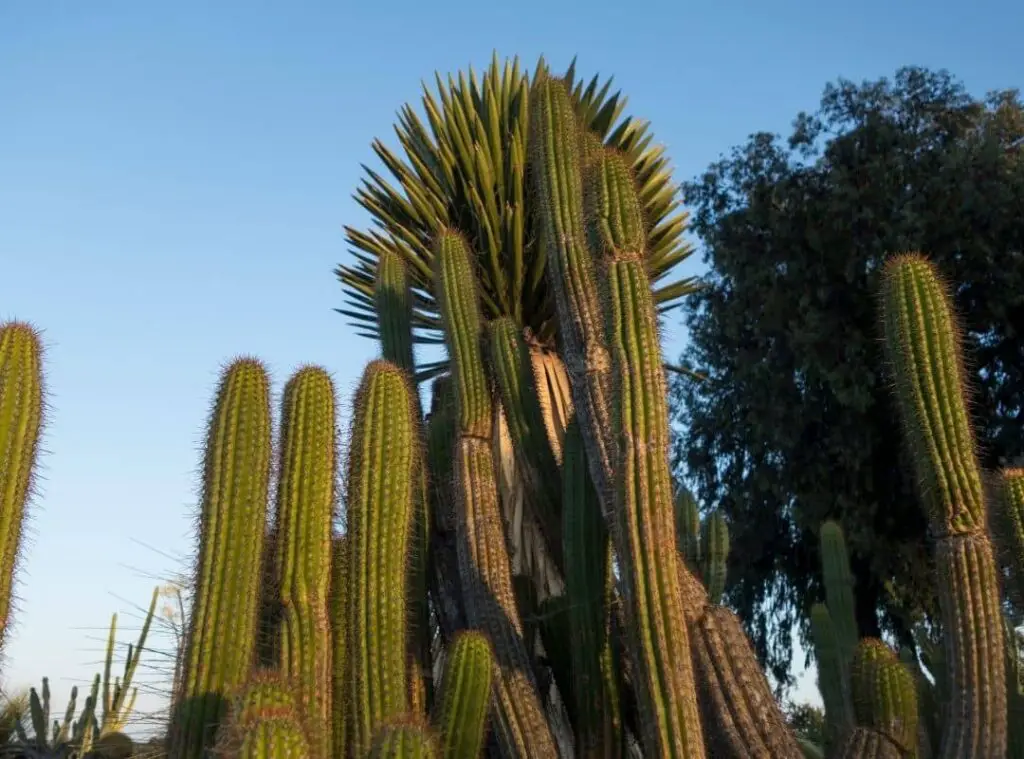Columnar cactus can grow quite impressively. That said, when you grow them in containers, it would be somewhat challenging for them to grow the way the plants want. Chances are that they could outgrow their space and obstruct the nearby pathways. In the at circumstance , you can consider pruning columnar cactus.

Guide on pruning columnar cactus
Columnar cactus has gained its popularity as one of the most beautiful indoor grown cacti. Furthermore, many people who live in mild winter climates opt to grow them as landscaping plants.
You need to prune the plants before the stems get too large. In fact, there could be Some stems which may carry sized spines along their ridges . Thus, it is important that you tackle the stem before it gets too large.
Once you use the proper equipment and plan things in advance before you start pruning, you will have successful results of the trimming. Eventually it would allow you to get rid of the overgrown unwanted growths from your plants and the plants will look much nicer.
Guide to pruning
01. Prepare your tools
First of all, you need to arrange the following tools and elements.
- o Bleach
- o Container
- o Protective clothing
- o Closed-toe shoes
- o Gloves
- o Safety goggles (optional)
- o Serrated knife
- o Pruning saw
- o Cooking tongs
- o Rope (optional)
- o Tarp (optional)
- o Cardboard (optional)
- o Garbage can (optional)
- o Box (optional)
- o Permanent marker
You should make sure that you are using the proper tool depending on the size of the stem you are working on. If you have a smaller sized cutting which has a smaller diameter, the best is to use a serrated knife.
On the other hand, if you are dealing with a stem which has a larger diameter, ideally you need to use angled blade pruning saws. Lastly, consider that you have a hard-to-reach stem, then a long-handled saw would work well with them.
02. Wear protective gloves
It is safer for you if you wear protective gears before you start interacting with the plants. You need to wear protective clothing which will cover your arms and legs.
Moreover, ensure that you are wearing protective gear consisting of closed toe shoes. Finally, don’t forget to wear gloves as well. Furthermore, it would be even better if you could wear safety goggles so that the cactus will not injure your face.
03. Select the cactus to prune
Next step would be identifying the cactus part to prune. Ideally You need to identify which outgrown growths you need to cut off.
After that observe the plants well and determine from where you need to start pruning them and from where you need to finish it off. Decide the order of how you should do pruning.
That way you could easily access the stems and prune them with the pruning tools. After that you can start pruning the inner overgrown branches. Next, you need to get rid of the long heavy branches which you can’t handle in sections.

04. Prepare disinfectant solution
To make the disinfectant solution, you need to add 1 part of household bleach with 10 parts of water. So that you could create a 10 percent bleach solution. After that you need to select a container which is tall so that you can dip the cutting edges and the pruning tools there.
05. Disinfect the tools
Disinfecting the tools is an important step which you should take when pruning the plants. All you have to do is to dip the tools in the bleach solution and let all the surfaces of the tools soak with it.
06. Cut the cactus
When you make the cuttings, if you have a smaller stem to deal with, you need to first grasp the intended cut location while using cooking tongs.
On the other hand, if the stem is larger, you should first place a rope piece right into the center of it. Next hold the stem firmly either using the tongs or rope and then make a clean cut at a 45 degrees angle.
While the cutting of that part takes place, you can ask some other person to hold onto the remaining stem part which carries the larger branches.
07. Remove the part carefully
Secondly you could remove the cut pieces and lay them on a surface like on a clean tarp or on a piece of cardboard.
You may follow this step if you wish to use those cuttings to make new plants. If you want to discard them, you could either put them in a garbage bag or in a sturdy box.
If you put them in a garbage bag be sure to cover them with papers or old cloth. Otherwise the cactus throne may harm you. Thirdly observe the plants again and see whether you need to remove that branch only or whether you need to make any newer cuttings.
If you could spot any torn or jagged areas, you need to ideally remove them. Ultimately you need to assure that you have made a clean smooth cut in the respective areas.
Keep making cuttings on the stem if they carry larger branches. You can use tongs or ropes when making the cuttings for these growths also. Depending on your wish you may either discard them or use them for the propagation process.
When you obtain the cuttings, observe those sections well and see whether they are rotting. If you wish to use them for the propagation process, you can separate the cuttings by placing X at the base of the cuttings while you can simply discard the rest or share them with your friends.
08. Check for damages
As aforesaid, you need to observe the cuttings well and see whether there are any damages , any torn or any other jagged areas on the cuttings. If you come across any, I recommend removing them and then proceed with the rest.

Can I cut the top off my cactus?
Yes you can cut the top off from your cactus. But do not do this if it isn’t absolutely necessary. If you have mammillaria or echinopsis you can cut or divide cactus from soil level.
And as in this case if you have a columnar cactus you can cut the section off the head. But keep in mind to always make clean sharp cuts.
How do you prune a tall skinny cactus?
If you have a taller skinny cactus, pruning them would be very handy here. If you let the plants grow taller in the same old pots, there will be a great probability for the plants to topple over.
If you have grown plants in light plastic containers, they usually tend to grow taller and slender as well. So, ideally you need to reduce the plant’s heights so that it would allow the plants to become thick and healthy too.
If you have a much taller cactus, you may have to use a saw for the pruning process. However, no matter what tools you use, they need to be clean and sharp enough so that you can make clear cuttings.
Consequently, it will ensure that there will be less potential for any occurrence of an infection. When you make the cuttings, ensure that you don’t harm the main stem and that you cut only the arms at the branch points.
If there are pads on the cactus you could use pruners to separate the pads. Moreover, bear in mind the way you make the cuttings on the tall skinny cactus would vary depending on the cactus species you deal with too.
If we consider columnar cactus in particular, best is to use a long-handled saw and then snip off the main trunk at the point where you want the branches to grow.
What happens if you cut a cactus in half?
I recommend the best is to cut the cactus at an angle without cutting flat. If you cut them in half, it would result in a flat cut and consequently it would lead to water pools.
Eventually those water pools would contribute to fungal and rot problems. What you could do to avoid this situation is to let the top parts of the cactus become callous and then pot them in a fresh dry soil mix.
Conclusion
Overall, pruning a columnar cactus is not a hard task to do. In conclusion, we have discussed how to prune the plants properly and all the steps you need to follow when doing that. So, I hope this article was insightful for you and that now you are all set to prune the plants properly.
Read Next : How To Pinch Succulents | Its Easy |
